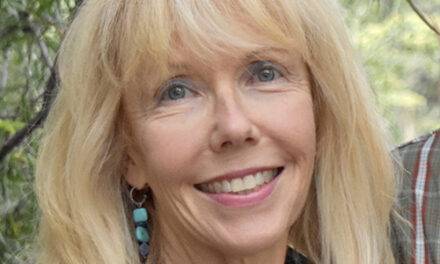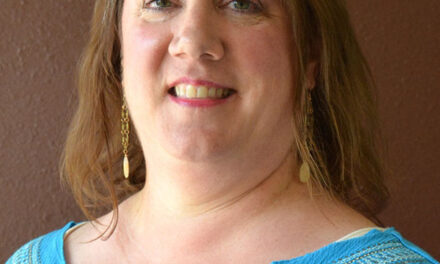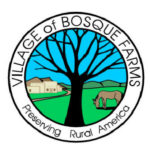first person

Sierra Cain
When looking for inspiration on what to write about for this February piece, I came across a few thoughts.
I had recently read a piece referencing how phones influence our daily lives, information of which is not new or unheard of to most, and how phones can take away from a job, experience or event that is unfolding right in front of us by keeping us distracted from something that requires the most of our attention.
This was referenced to riding a horse and that if you are working a horse properly, you likely have no time to be distracted by a phone. I then got to thinking about a workshop I had finished with youth on communication. Both concepts, of course, go hand and hand.
Communication is defined by the Merriam-Webster dictionary as a process by which information is exchanged between individuals through a common system of symbols, signs or behavior. We can break apart this definition to understand how communication truly works.
First to engage in communication, we must have something we are trying to relay, also known in the definition as the information. The second part is, to me, the most important, the exchange. The exchange of information relatively portrays an idea of mutual understanding as in two or more people both listening and understanding what is being talked about. This means that at least two people must be paying attention in order to exchange some sort of information.
Now, if you have been influenced to use technology to impact your life you likely understand how we can become distracted by the many ways in which we can communicate.
We now have wireless earbuds, text messages, SnapChats, be reals, social media accounts, phone calls, car speakers and, of course, the in-person conversations. While there are certainly more ways than listed, technology, when used properly, provides us with many modes of communication that can be fitting to however you can communicate at the time. This could be based on your surroundings or your comfort level.
However, there is an increased importance in teaching proper use of technology when communicating on all levels to both youth and adults.
Throughout my workshop with youth, I teach eye contact, body language and portraying your voice to be heard clearly. We also talk about something that both people engaging in communication must have for each other. This answer is respect. Whether it is your teacher teaching, your friend venting or your boss instructing, we must all have a level of mutual respect for both the sender and receiver. This references back to the final portion of the communication definition of using a common system of symbols, signs or behavior.
Many of us have become used to this multi-tasking behavior that technology can allow us to achieve, which ultimately, can be forming a sense of dis-respect to our peers. Whether its our earbuds in playing music while we listen to a lesson, answering a phone call while we are checking out at the grocery store, or answering a text while our family or friends are speaking to us, these forms of communication can be misleading to both the communicator and the receiver. We are busy people!
We are also the example for our youth and how they should communicate with their peers and adults. Respect goes both ways, whether it’s listening to their school day and staying off of the social media account while they finish sharing or speaking to them while they are trying to achieve a task.
In 4-H, we foster healthy adult relationships with youth. This includes mastering mutual respect as well as teaching youth how to communicate properly — skills that last a 4-H member a lifetime.
However, in order to teach we must be sure we are leading by example and putting away the distractions to be effective communicators in this world.
Program announcements
To register for an upcoming program, call the Valencia County Cooperative Extension Service at 505-565-3002. For more information, visit valenciaextension.nmsu.edu.
- Valencia County 4-H Elementary School Dairy Workshop: If you are an elementary teacher interested in having a dairy program for your class in February, contact the Extension Office at 505-565-3002 or by email to Sierra Cain at [email protected]
- Ready, Set, GROW! Free gardening classes are being offered virtually. “Pruning Fruit and Nut Tress” Feb. 15, 2023. To register for upcoming classes, visit desertblooms.nmsu.edu/grow.html
If you are an individual with a disability who requires auxiliary aid or service to participate in a program, please contact the Valencia County Cooperative Extension Service Office at 505-565-3002 two weeks in advance of the event.
(Sierra Cain is the Valencia County 4-H/Youth Development agent for the New Mexico State University Cooperative Extension Service.)

Sierra Cain, guest columnist
Sierra Cain is the Valencia County 4-H/Youth Development agent for the New Mexico State University Cooperative Extension Service.















